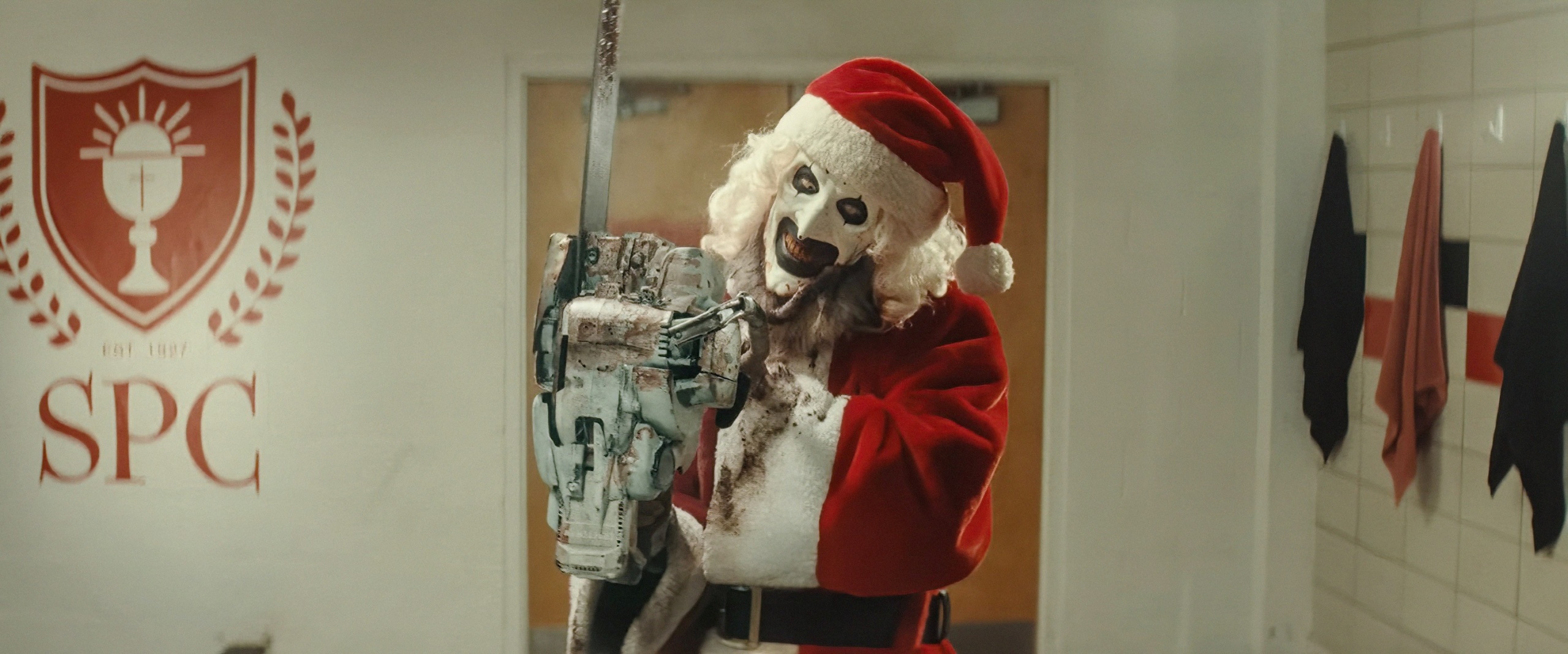Don’t call “Terrifier 3” Cineverse’s breakout film. That moment actually came with the surprise success of its predecessor, 2022’s “Terrifier 2.” The original “Terrifier” from 2016 — not released by Cineverse — made only $421,000. Once the sequel landed at Cineverse — then still named Cinedigm — it exploded to an impressive $15.7 million on a shoestring budget, but only after Cineverse scrambled its marketing jets to react in real-time to a viral hit.
For the third “Terrifier” film, CEO Chris McGurk would not be caught off guard again. He and President Erick Opeka used the unusual asset mix of new media they’ve compiled over the last decade plus — everything from a podcast network, a Bob Ross FAST channel, an ad-tech platform, and the horror blog Bloody Disgusting — to create a hyper-targeted theatrical release strategy around “Terrifier 3.”
“We developed a blueprint where streaming and associated assets really supported and made a theatrical release work for an independent film,” McGurk told IndieWire.
Specifically, marketing “Terrifier 3” through Bloody Disgusting, its horror podcasts and Screambox FAST channel were no-brainers. But Cineverse’s proprietary c360 ad tech allowed the company to directly market to fans across platforms — and to do so on a micro budget.
Cineverse spent just $500,000 on the film’s marketing; McGurk estimates they squeezed $5-10 million in marketing value out of that focused spend. To date, “Terrifier 3” has made $79.9 million at the box office globally. It should be an ROI case study in business schools.
“We didn’t spend a dime in national media,” McGurk said. “It’s a waste of time. If you have the tools to hyper-identify the fan bases you’re going after, then it’s basically just throw the whole rulebook out.”

It’s like with the presidential election. (We know, we thought it was finally behind us too.) President-Elect Trump went on podcasts and leveraged social media while Kamala Harris spent an enormous amount of money on traditional media marketing. (We’ll let you decide if that makes Trump Art the Clown in this analogy.)
“That’s sort of a macro version of what we just did right here,” McGurk added.
Because it’s not a traditional studio or distributor (the film was released in tandem with Iconic Events; Cineverse ditched its distribution arm after its first release “Short Term 12” bombed), McGurk believes it can take risks the studios won’t. A studio film would have to be rated by the MPA, but Cineverse was able to lean into the unrated tag for “Terrifier 3.” It has that dangerous thing going for it.
And just as the last “Terrifier” got tabloid attention as a movie so gross that people were vomiting during it, Cineverse embraced stories about kids buying tickets for “The Wild Robot” and sneaking into “Terrifier 3” instead. They also worked to expand the audience by focusing the marketing on the frights over the gore, and as a result, “Terrifier 3” saw a significant boost in its female audience compared to the second film.
“You combine a studio that will take those risks and work closely with talent to push the envelope, on top of having all the assets, you start to get to a very limited subset of people that could do that, if not maybe just us,” Opeka said.
So maybe just take your project to them. Opeka says they’re hearing from other unhappy producers who feel their IP has been mismanaged by other studios. Get in line: Cineverse just announced a reboot of “Silent Night, Deadly Night,” and “Terrifier 4” is probably not far away.





